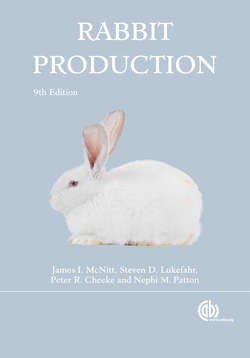Читать книгу Rabbit Production - James I McNitt - Страница 61
На сайте Литреса книга снята с продажи.
Causes of Losses in Young Litters
ОглавлениеDisease accounts for only a small percentage of the mortality that occurs the first week following kindling. Most losses during this time are due to improper equipment or incorrect feeding and management methods. Some cases may be due to the doe failing to produce milk. You can diagnose this by feeling the doe’s mammary tissue to determine whether it is producing milk (Fig. 11.6). If it is not nursing the litter, the milk glands will be undeveloped and the young will be shriveled and wrinkled. If she is nursing the kits, the udder will be well developed, and when the teats are stripped, there will be evidence of milk. The well-nourished young will be plump, and the milk line may be detected through the abdominal wall, depending on how recently they have nursed. If the doe has not produced any milk, it may be because the ration she received during the gestation period was inadequate in quantity or quality.
For a variety of reasons, does having a first litter often do not use the nest box and have their litter on the floor of the cage. Does should not be culled at this point, but if a doe has her second litter “on the wire”, culling should be considered. The use of drop nest boxes helps to reduce the problem.
At kindling you will obtain better results by making it possible for the doe to be secluded and undisturbed. Many losses of new litters are caused by the presence of strangers in the rabbitry when the doe is due to kindle or by the presence of strange cats or dogs or the natural enemies of the rabbit, such as opossums, rats, and snakes. These predators sometimes cause trouble in the city as well as in the country. Even if they cannot gain access to the cage, they may be so close that the doe can detect their presence, and instead of going into the nest box to kindle, she may kindle on the cage floor. If she has already kindled when she discovers the presence of predators, she may jump into the nest box in an attempt to protect her litter, and because she is frightened, she may stamp with her hind feet and crush her young. The predators seek more food when nursing their own young and, consequently, cause more trouble in the rabbitry in the spring. Evidently they can locate the cage where a doe is kindling or where a litter has just been delivered by the scent of blood. The losses are more likely to occur at night, and the presence of the intruders may not be detected by the caretaker. The rabbits, however, generally give warning by stamping their back feet, and if this warning is heard, an immediate inspection of the rabbitry should be made.
